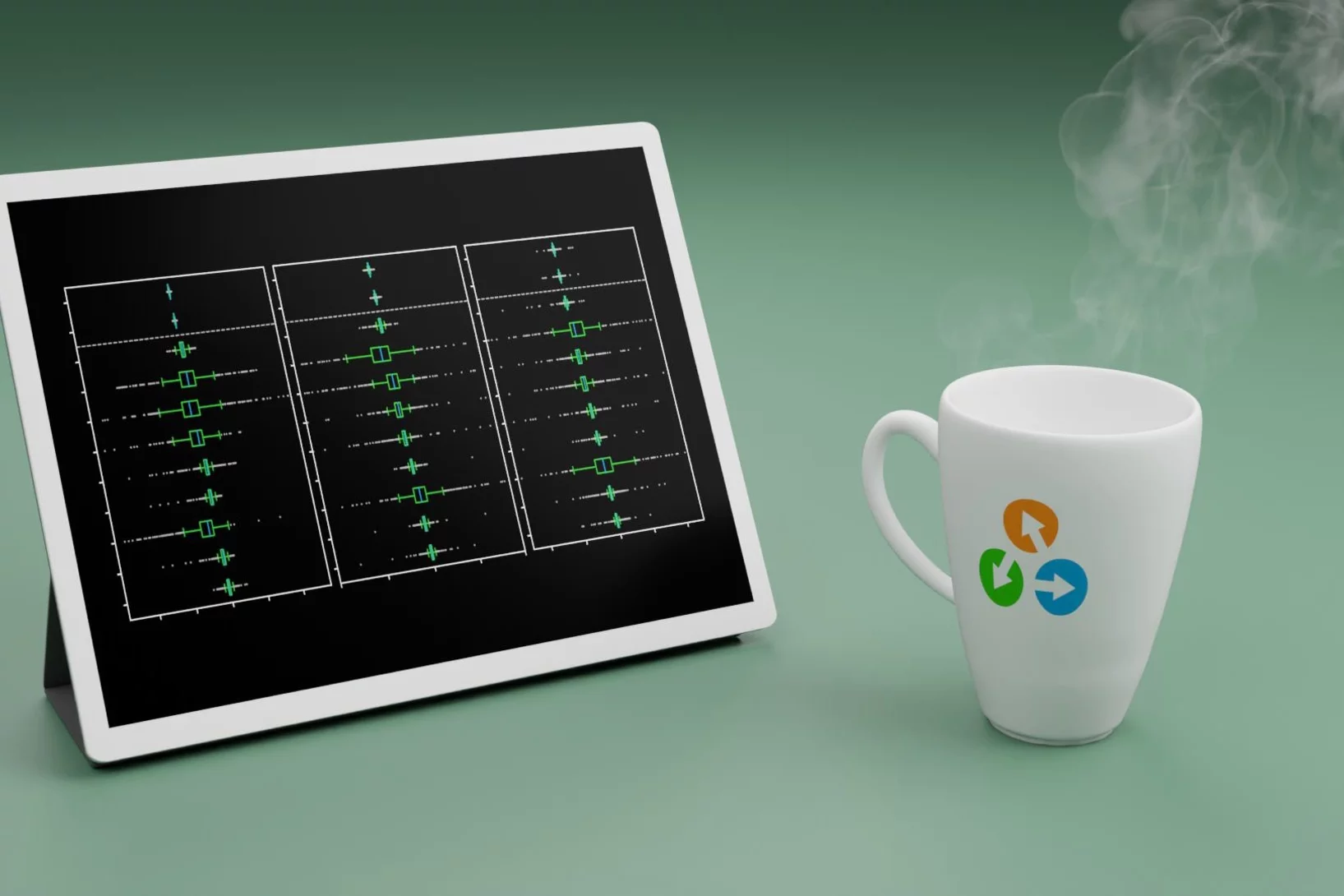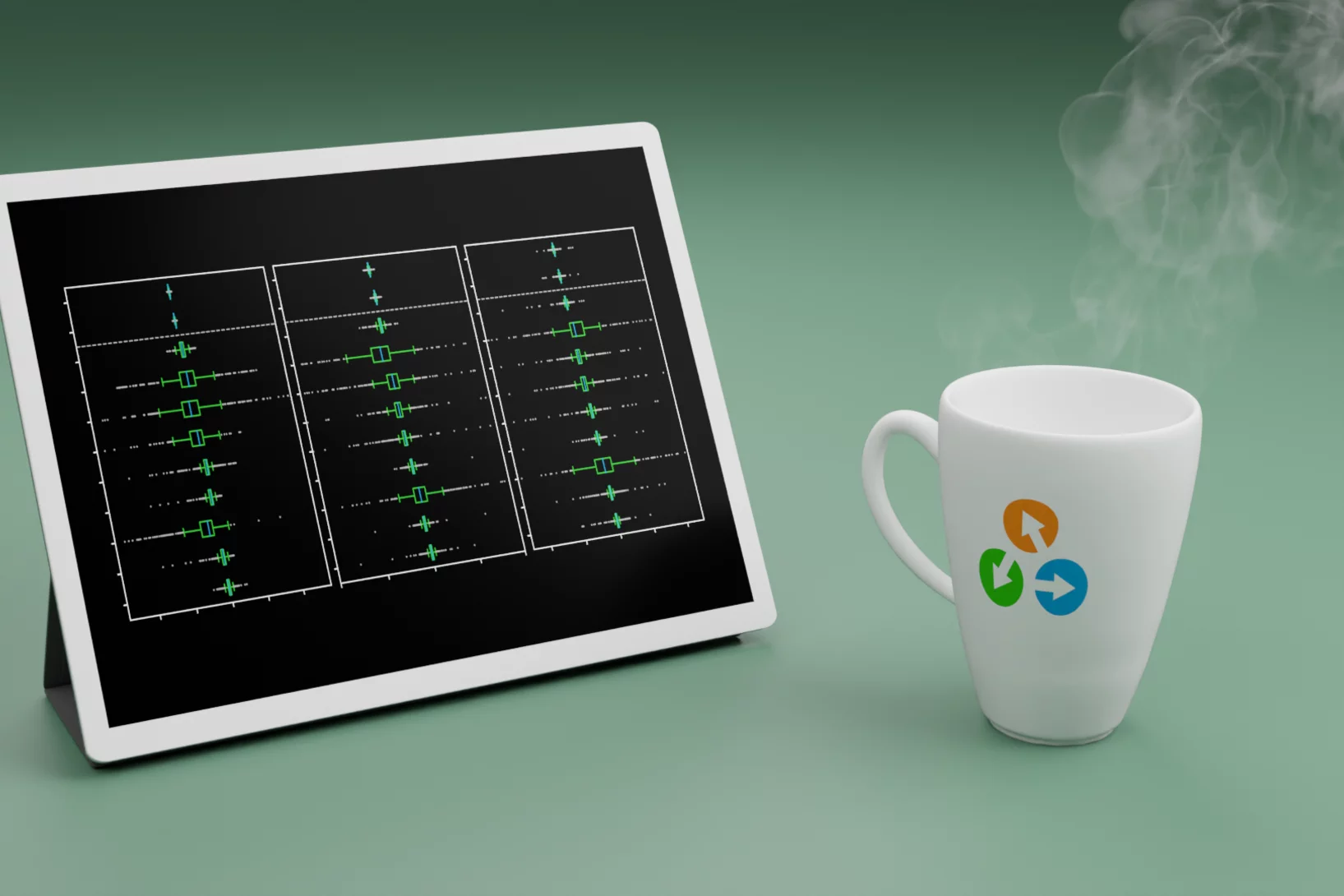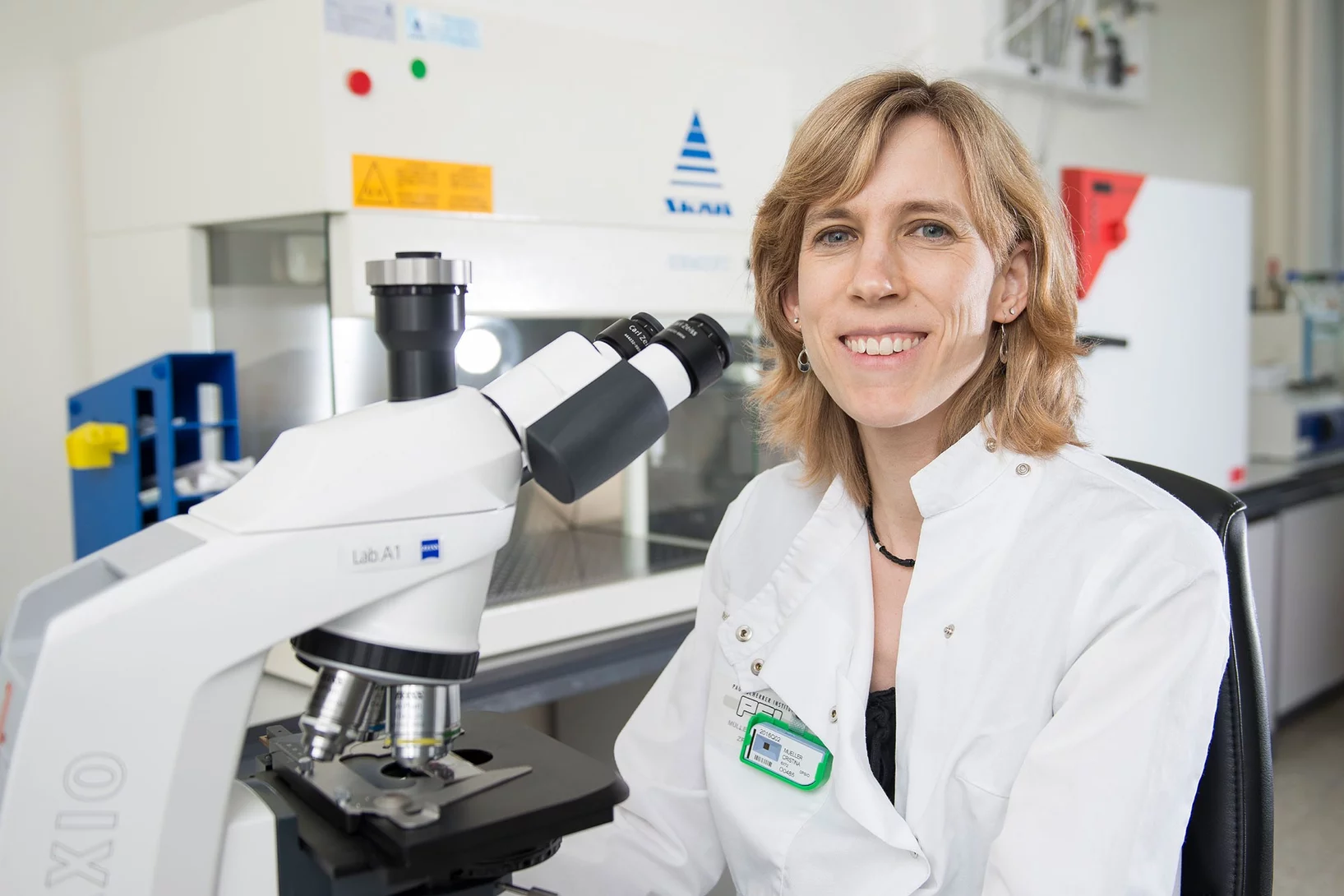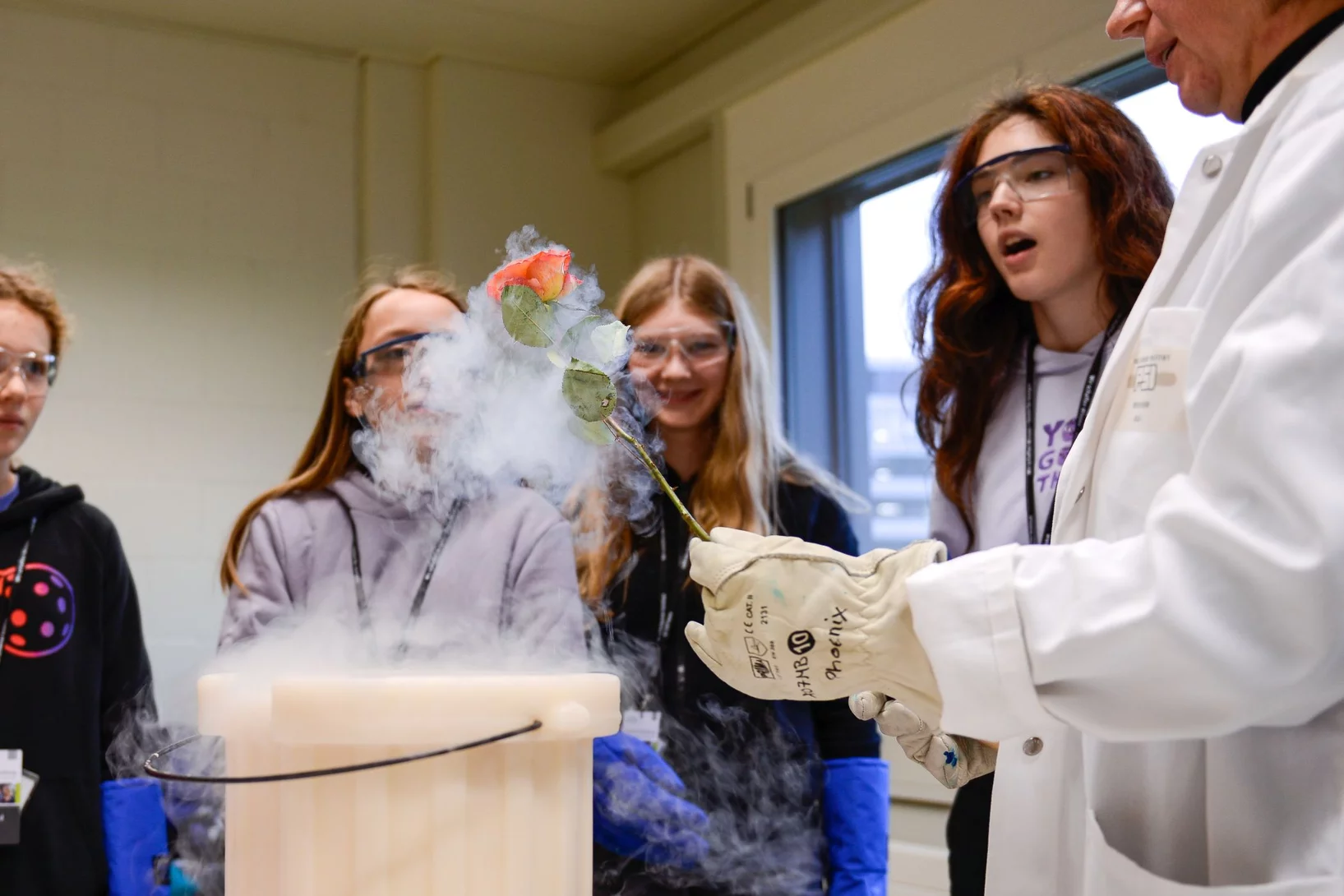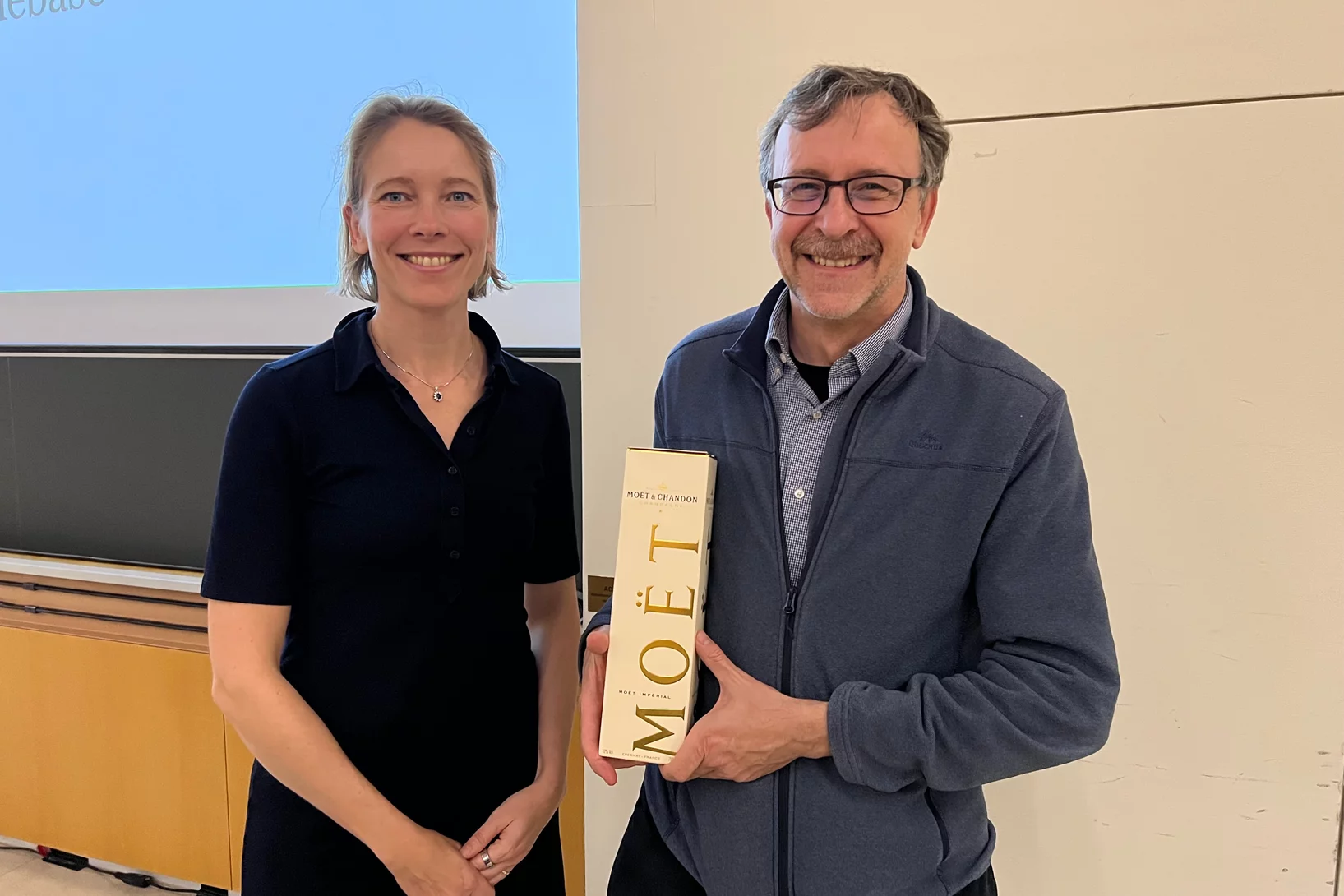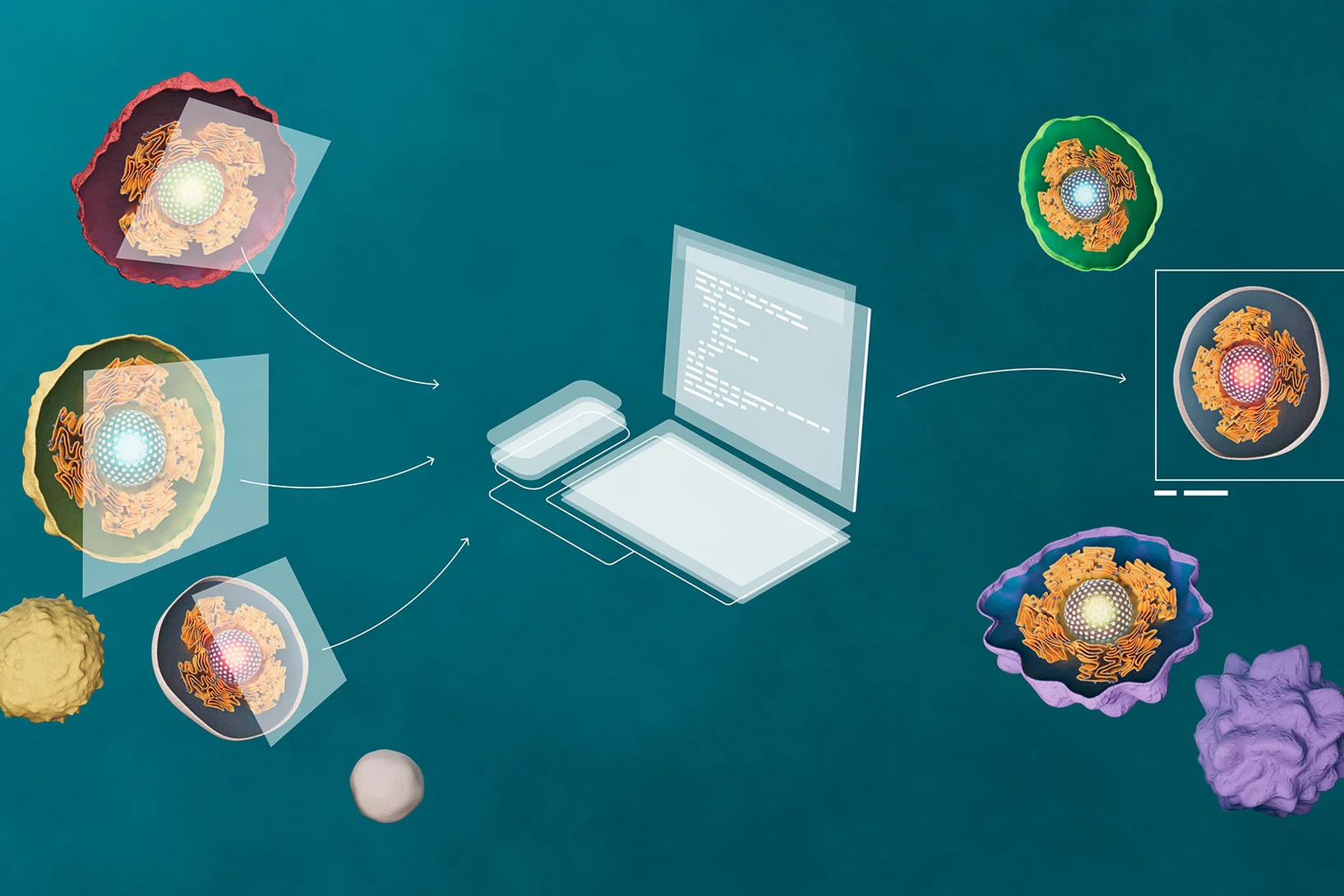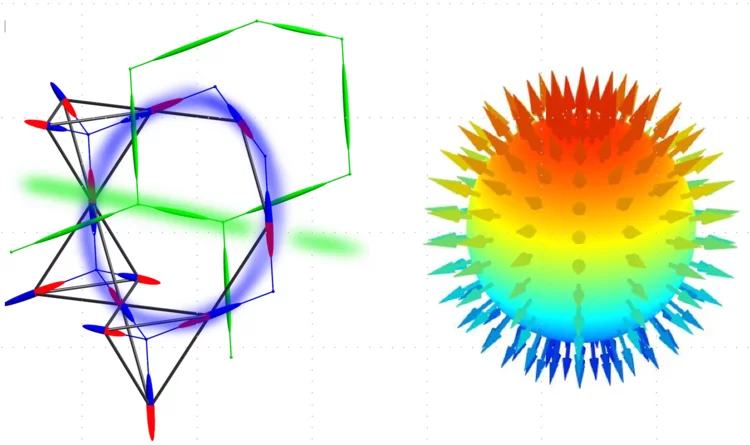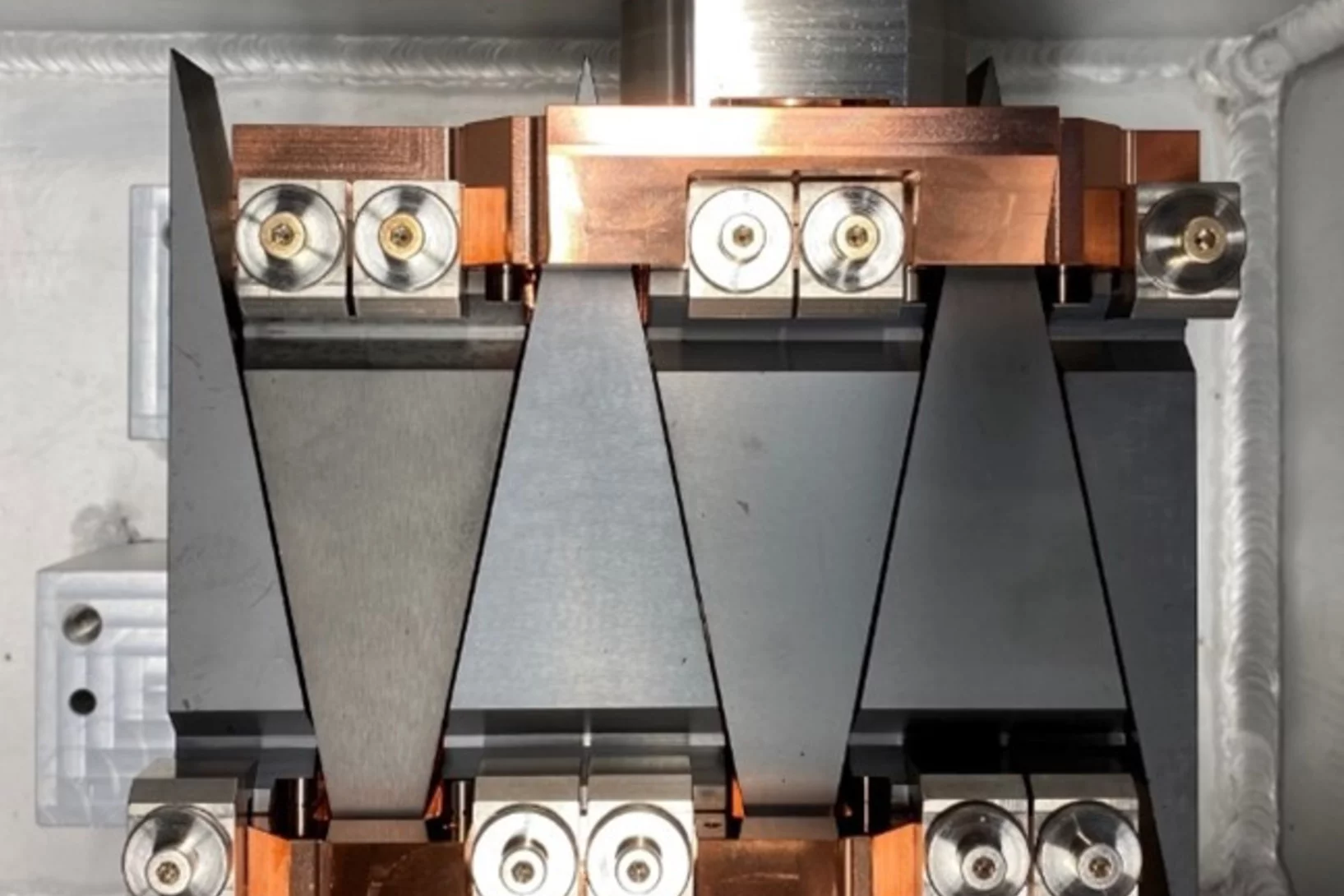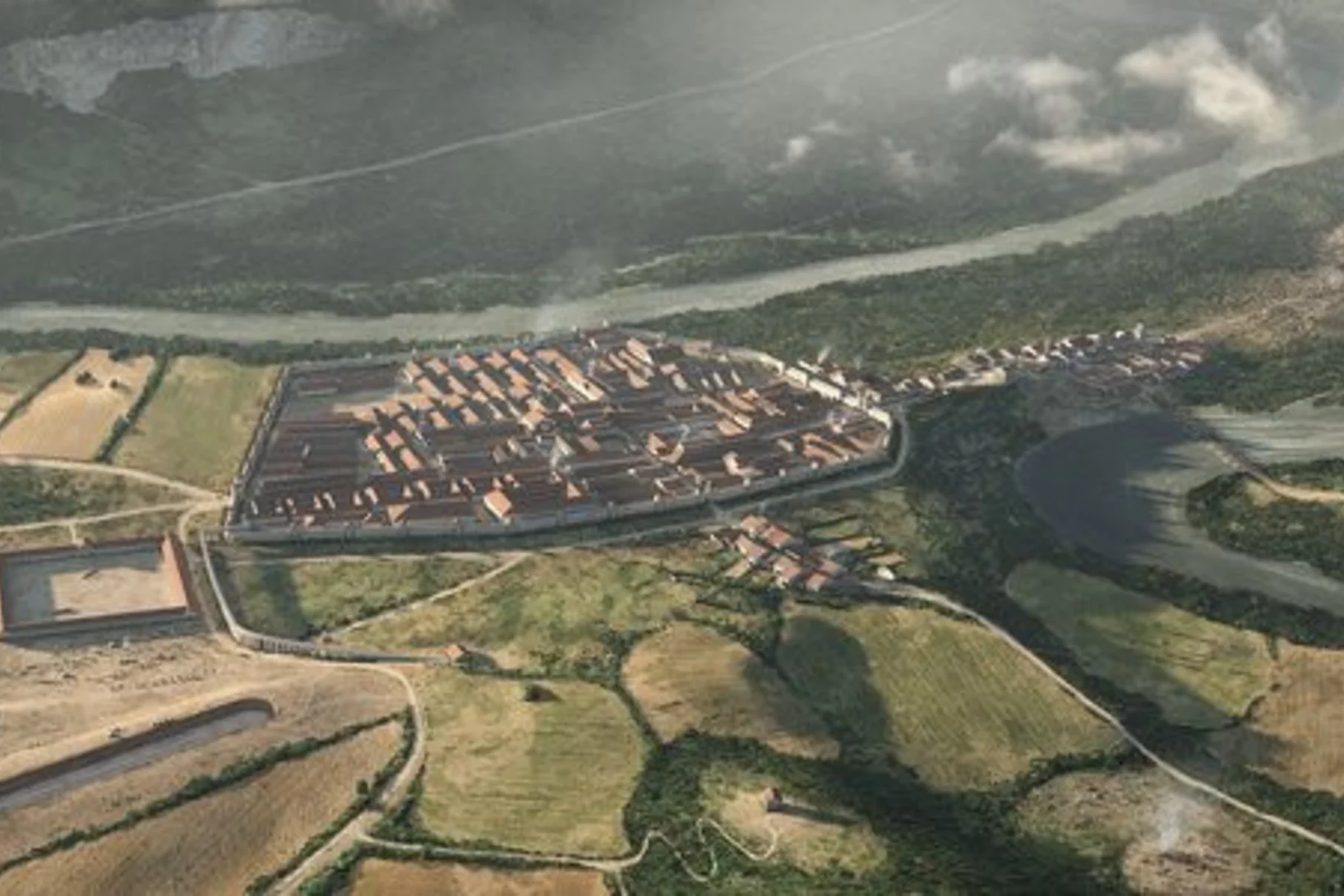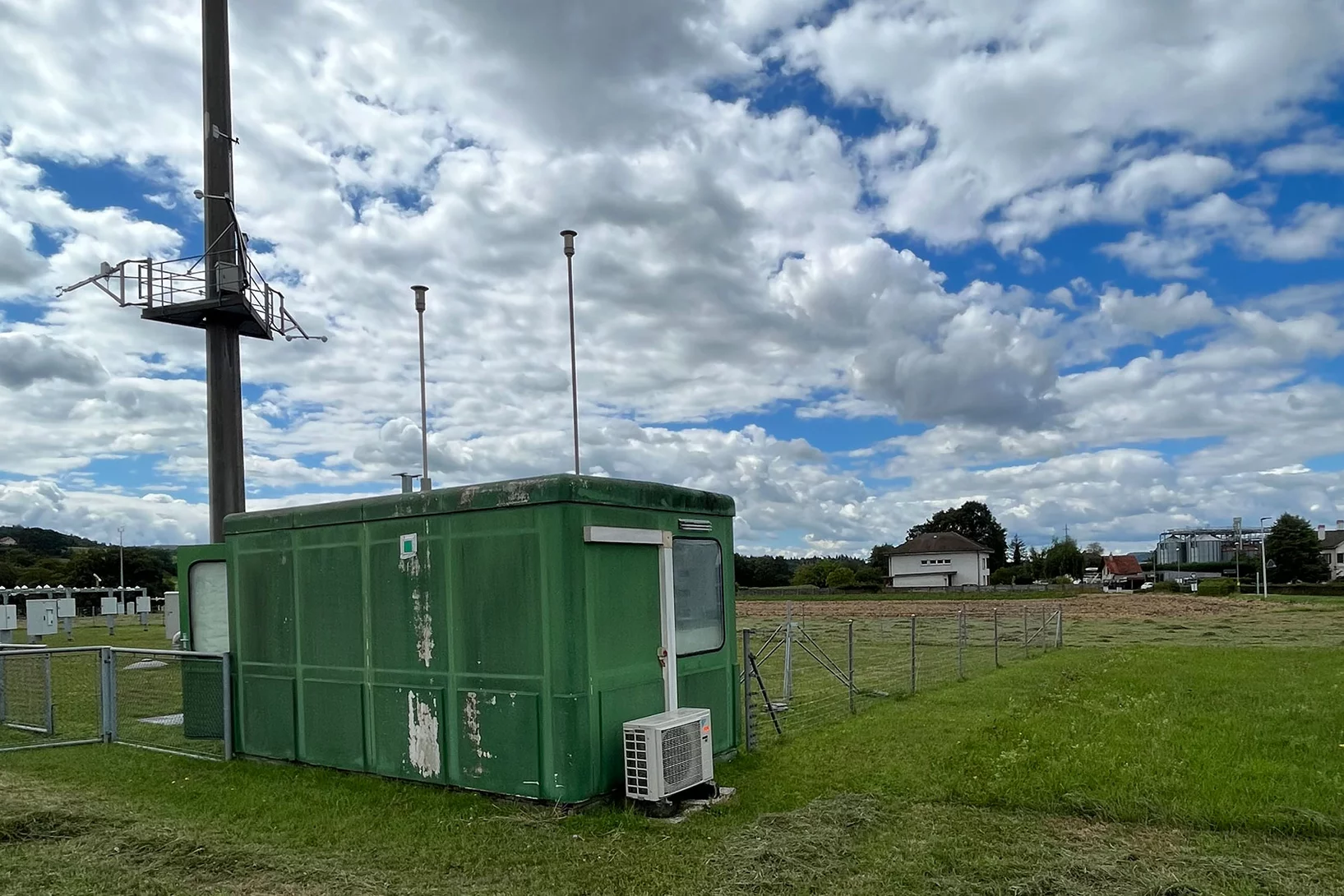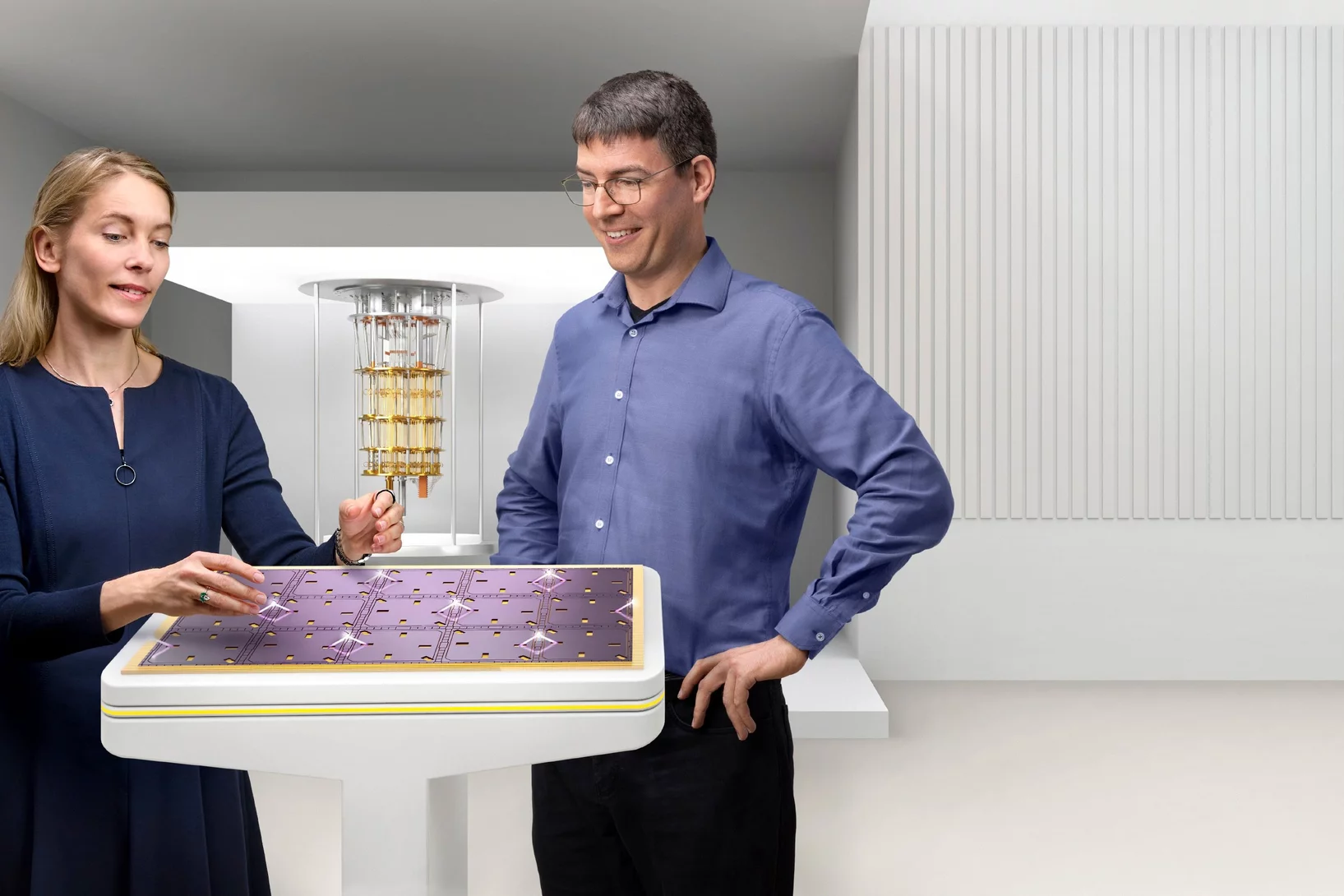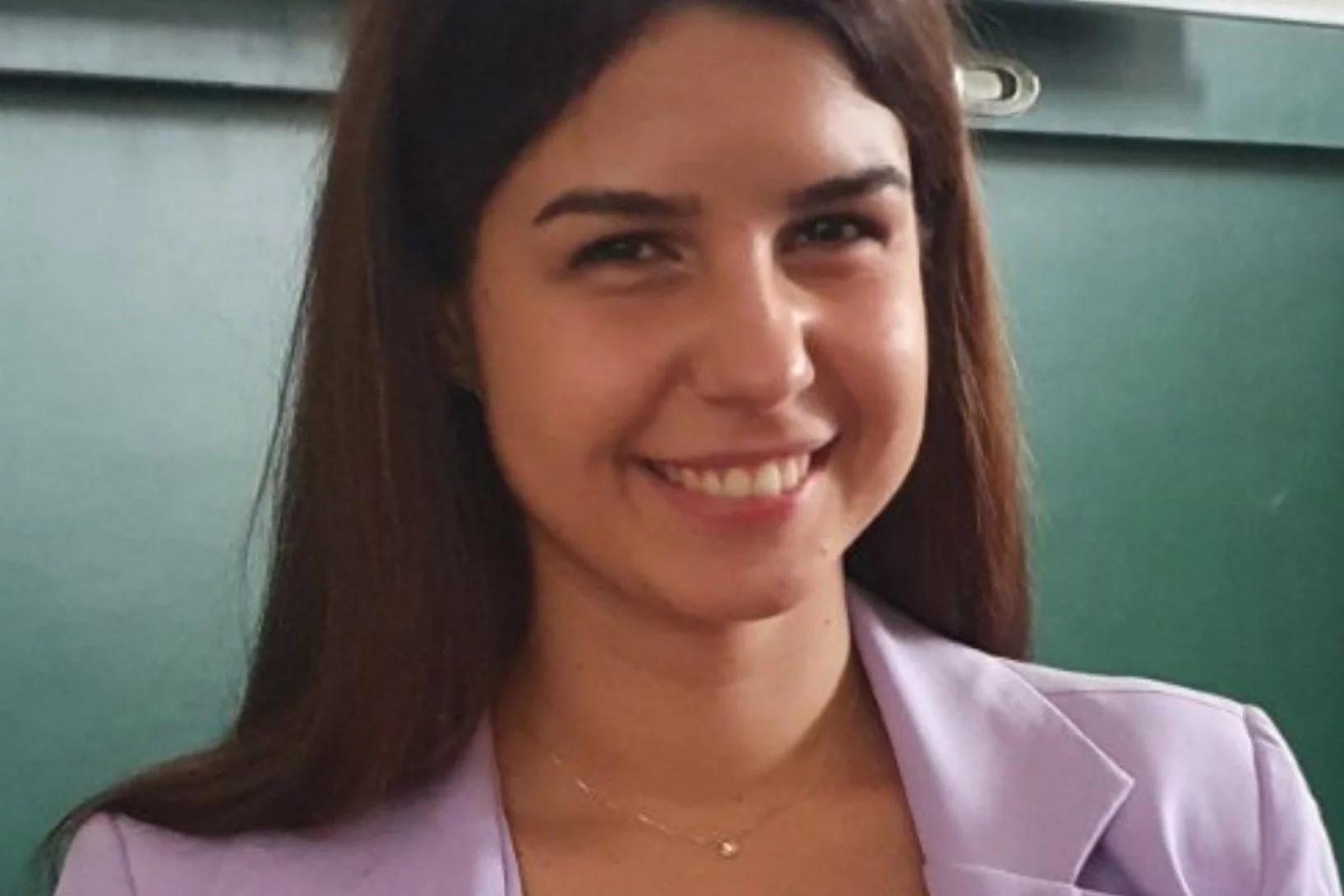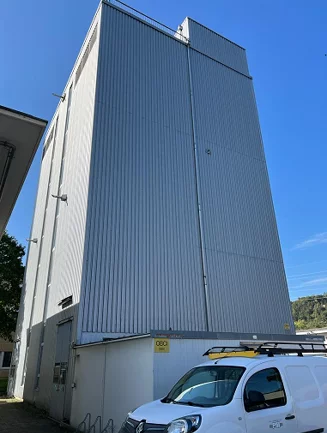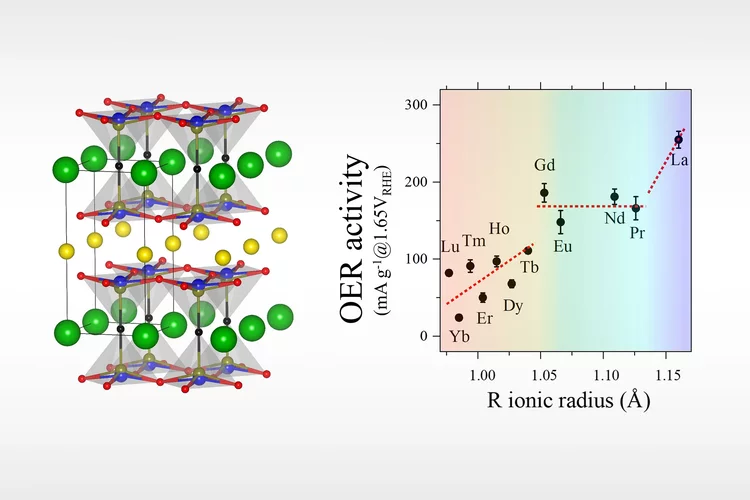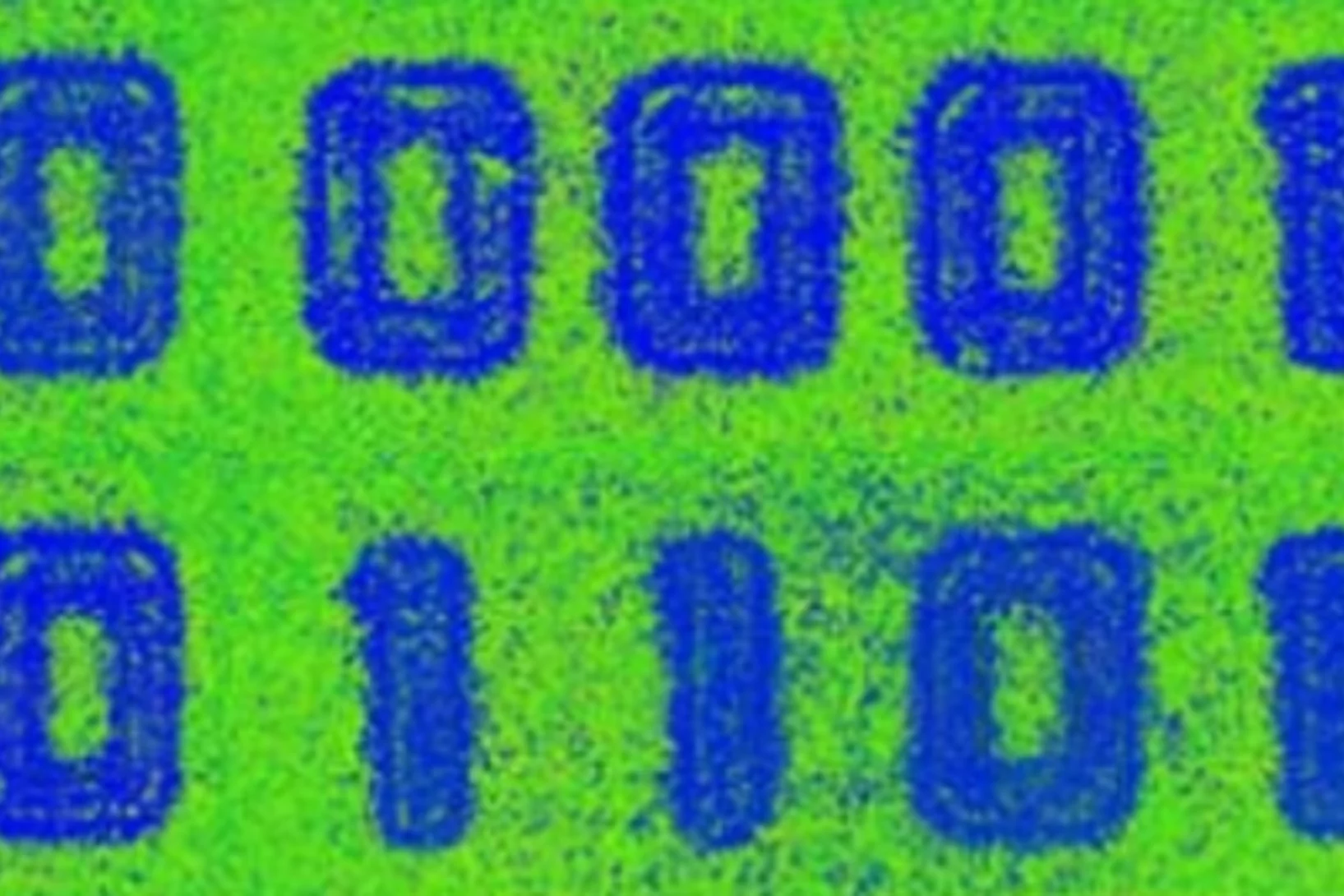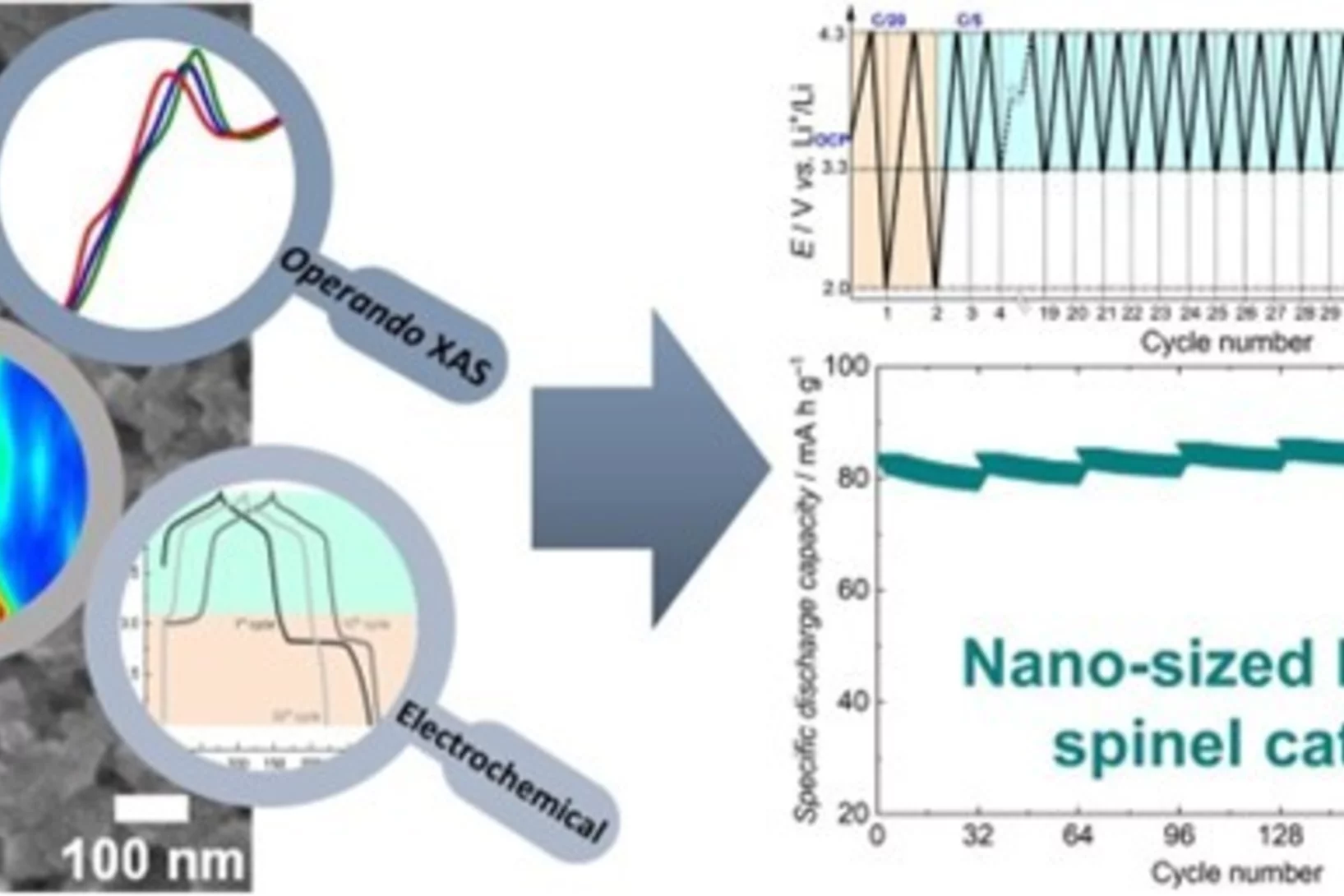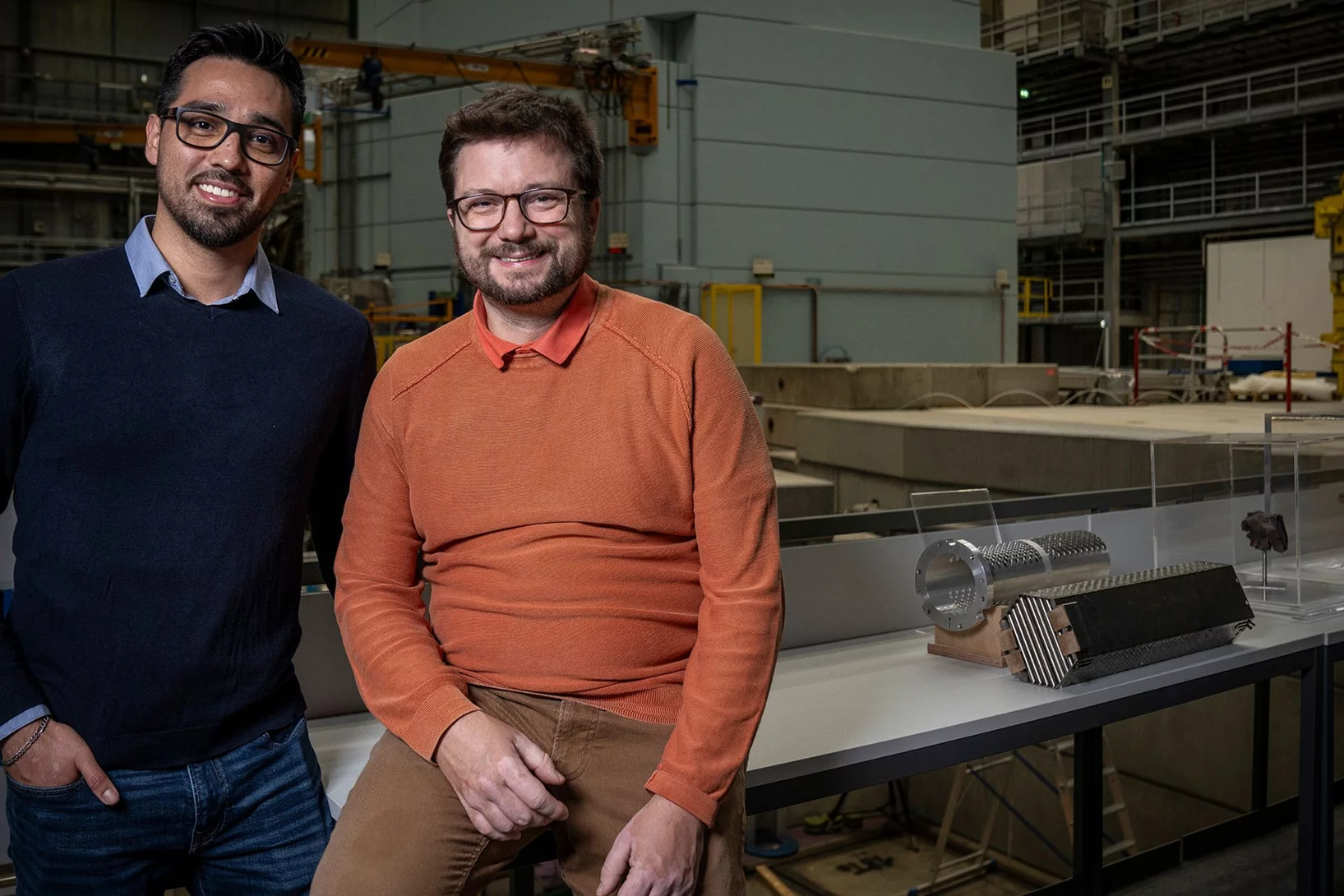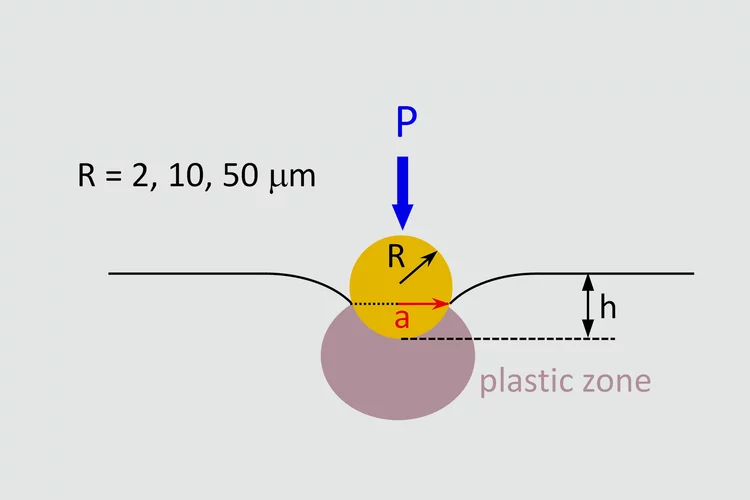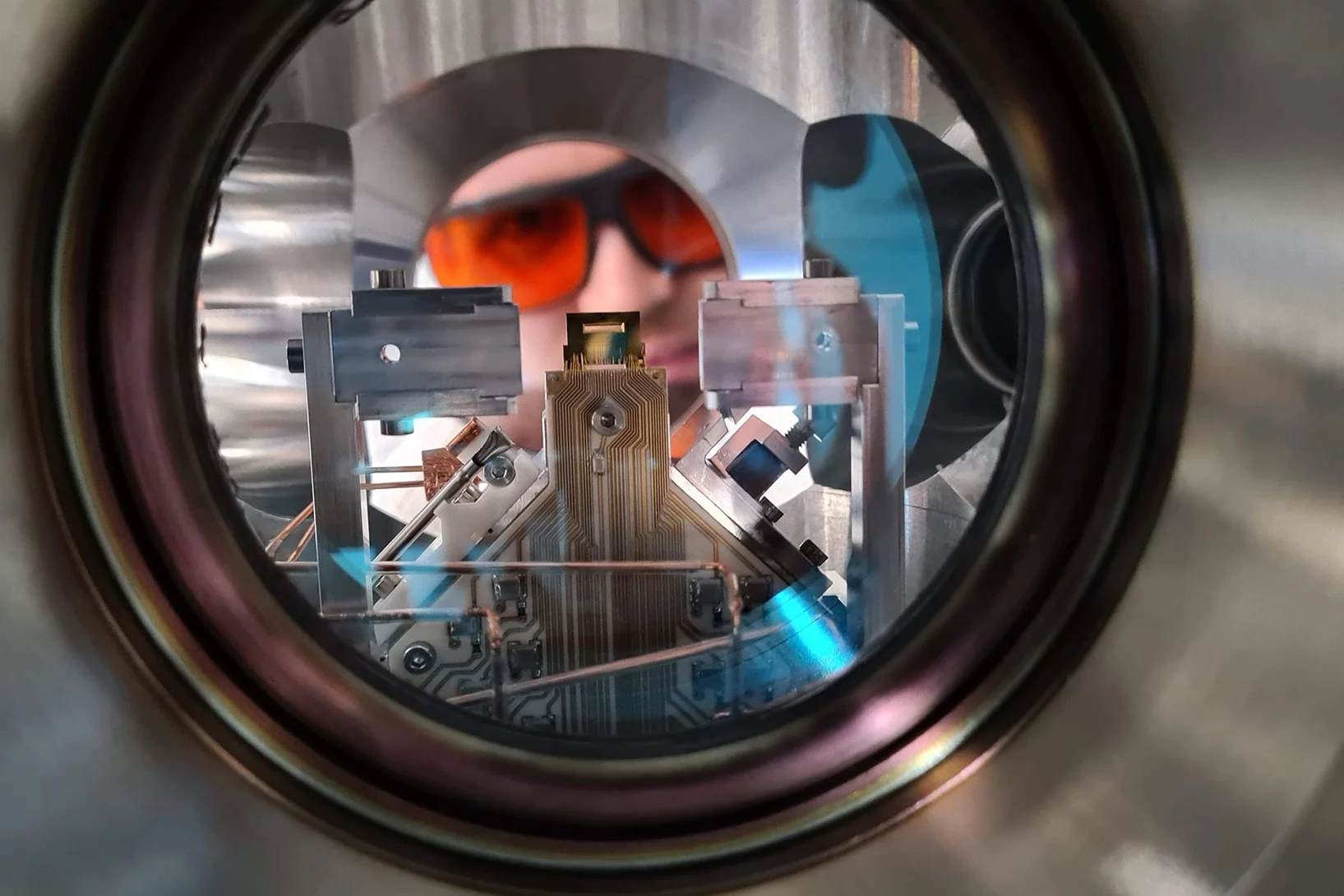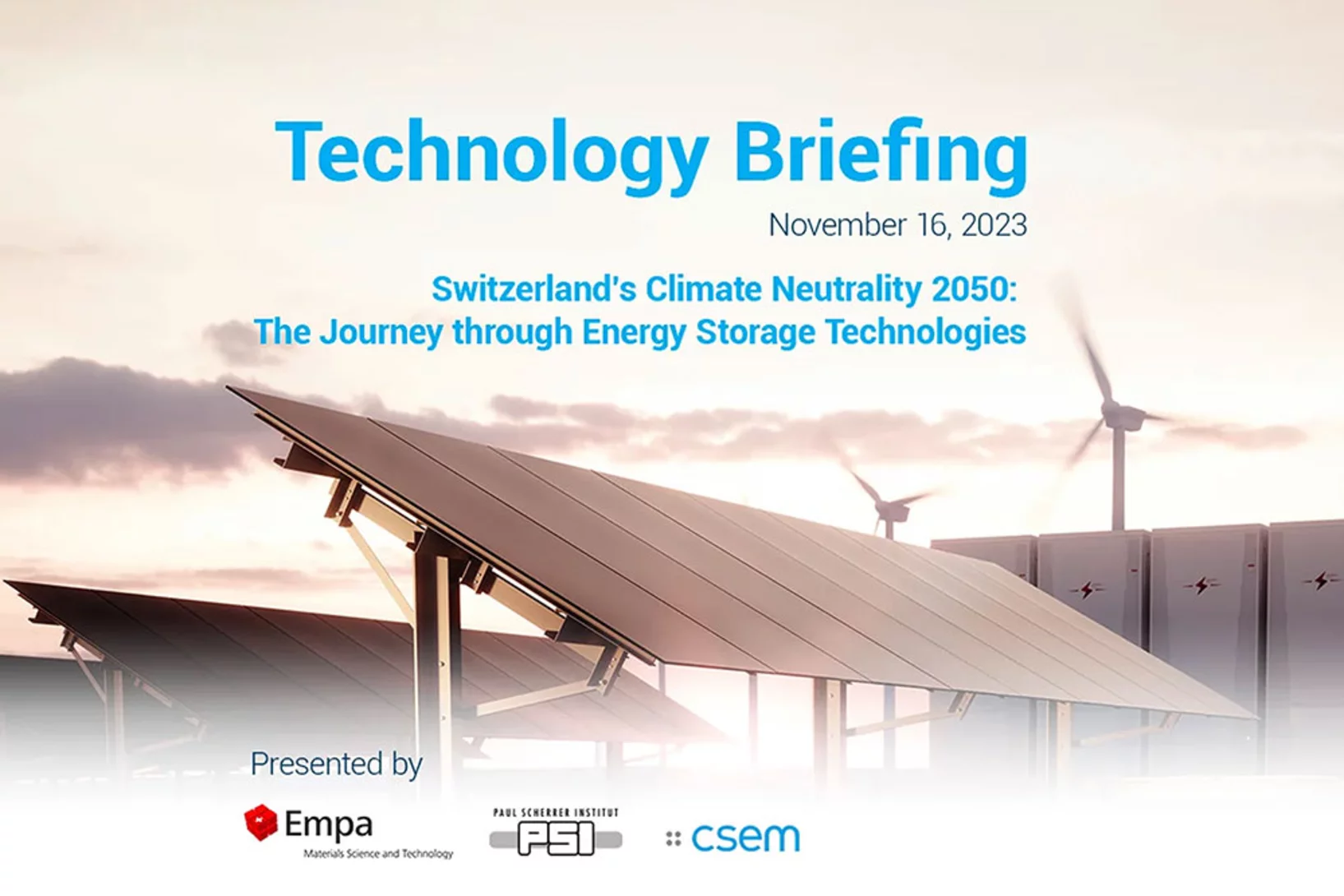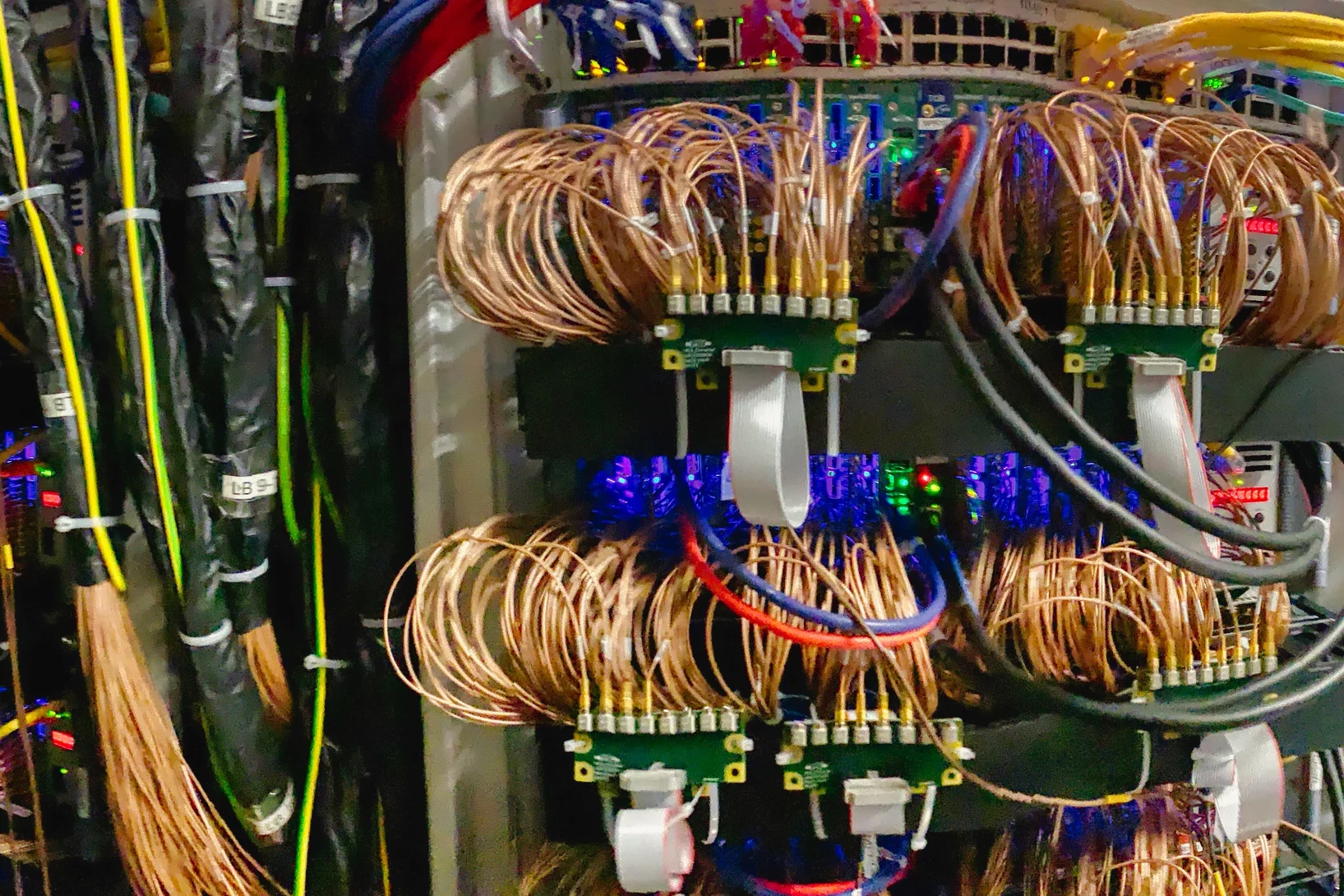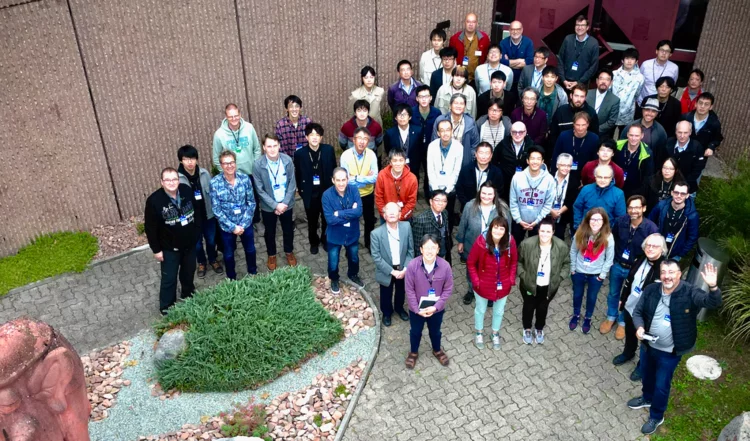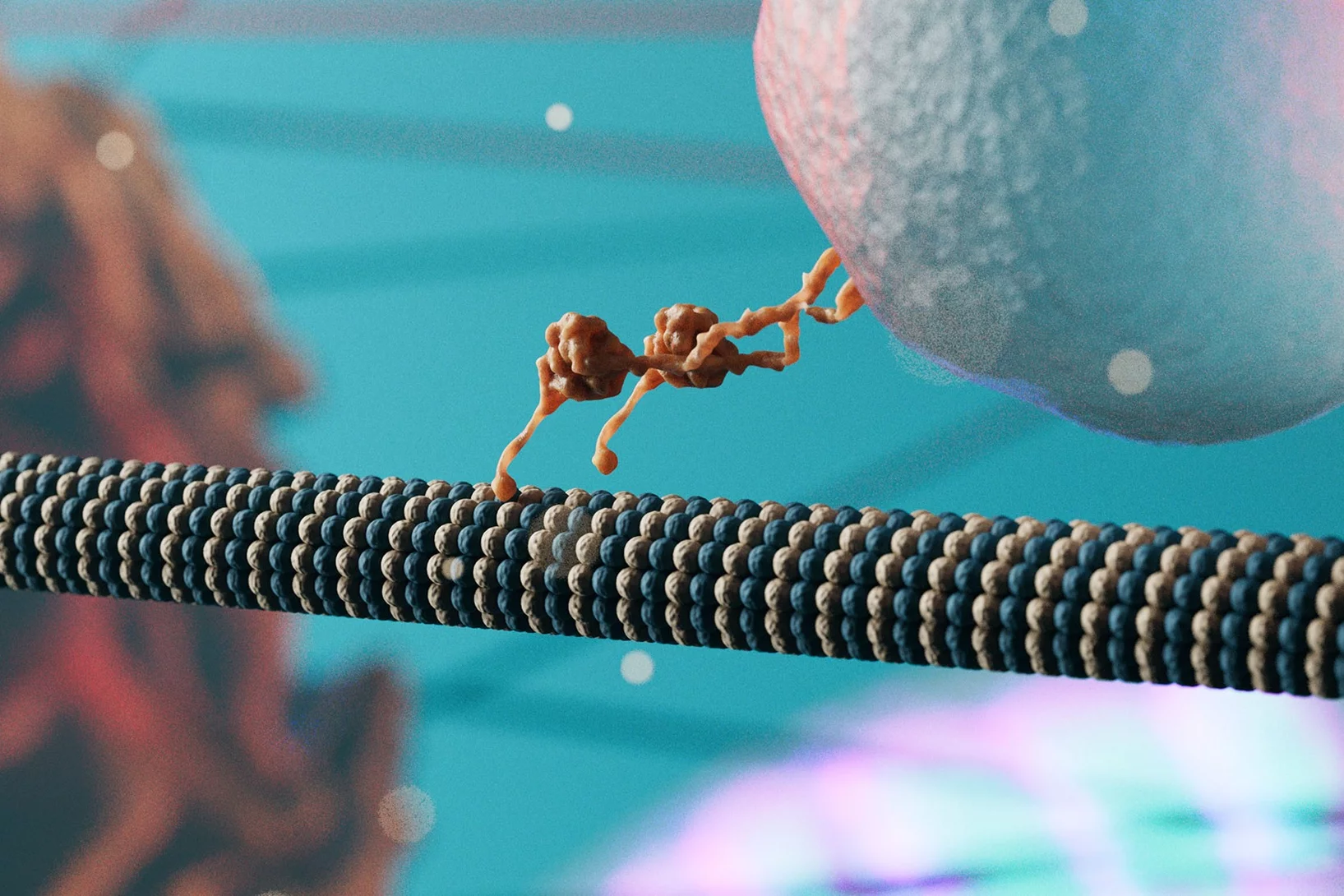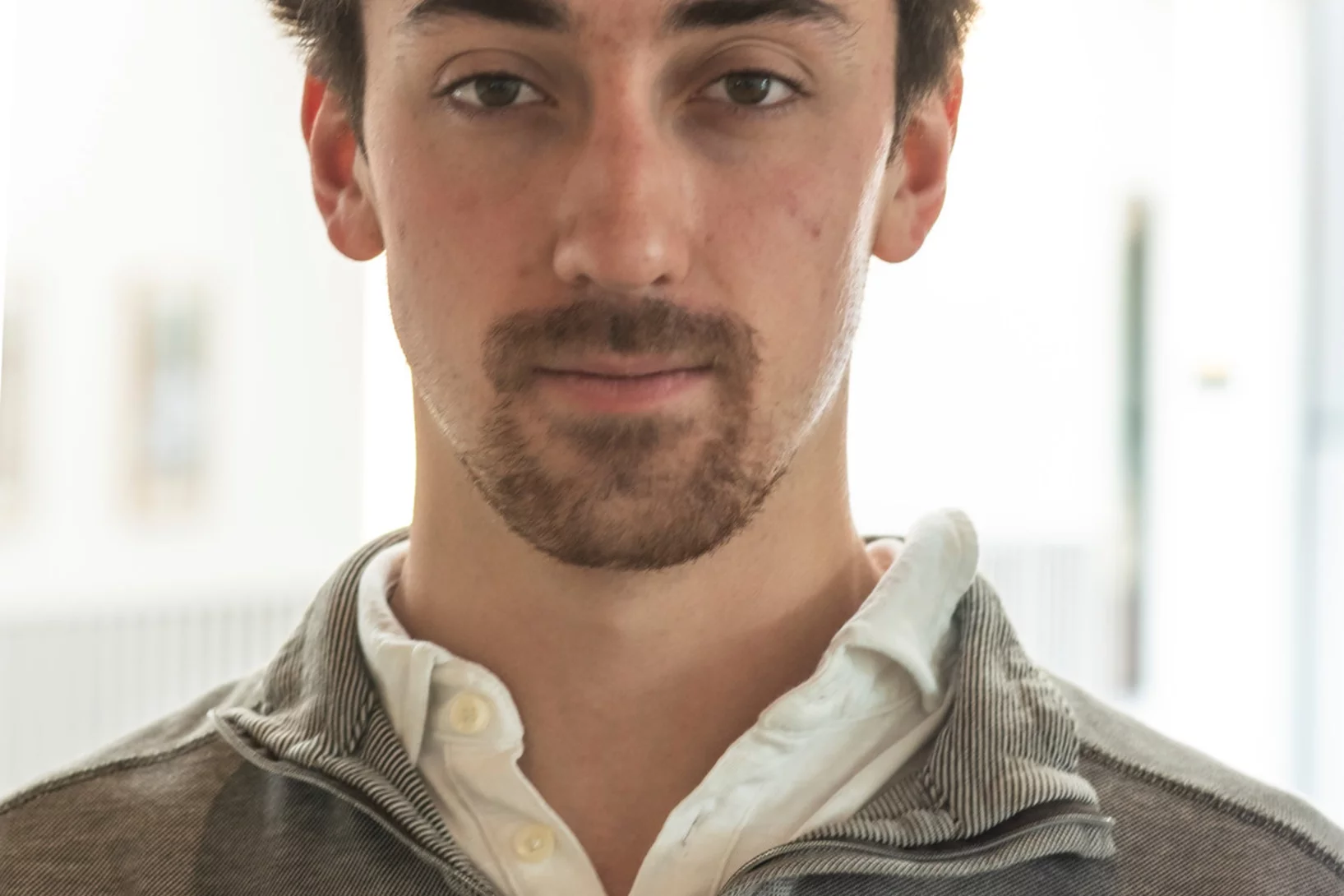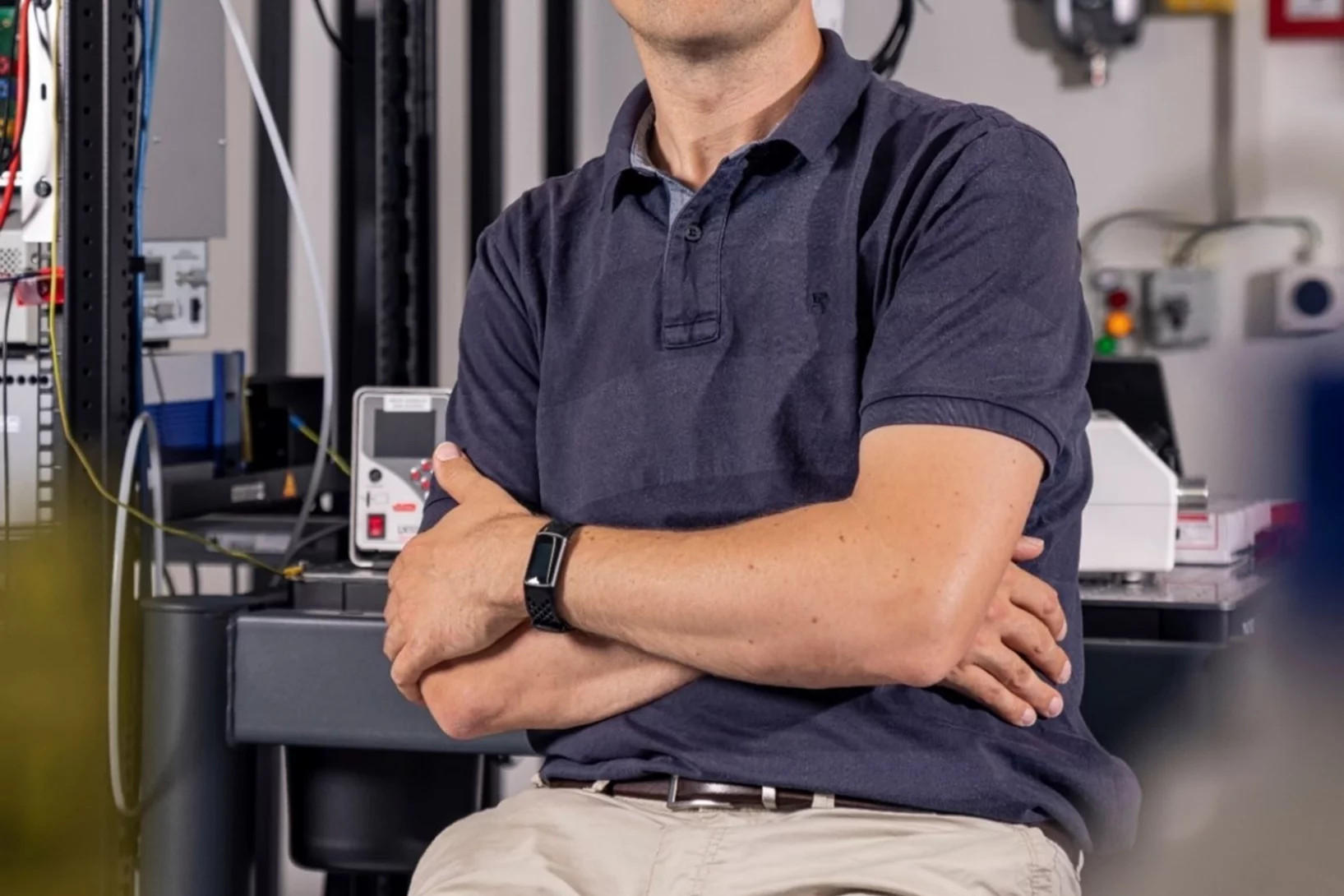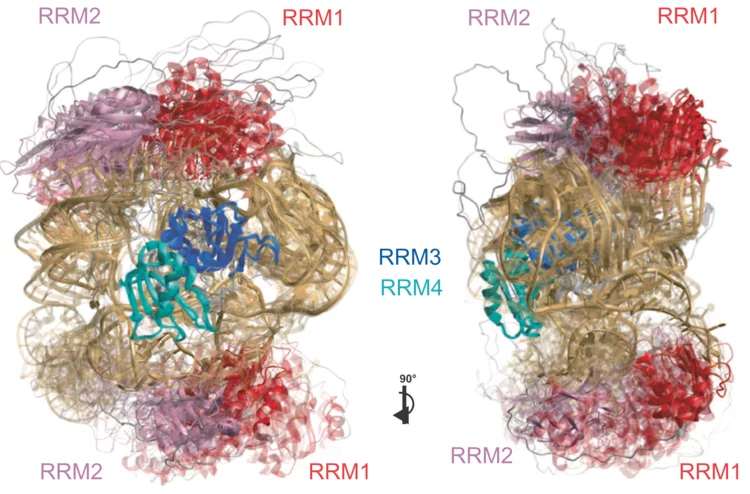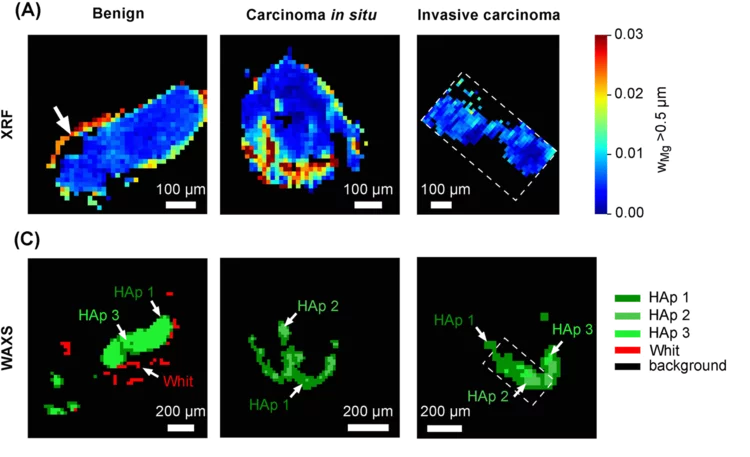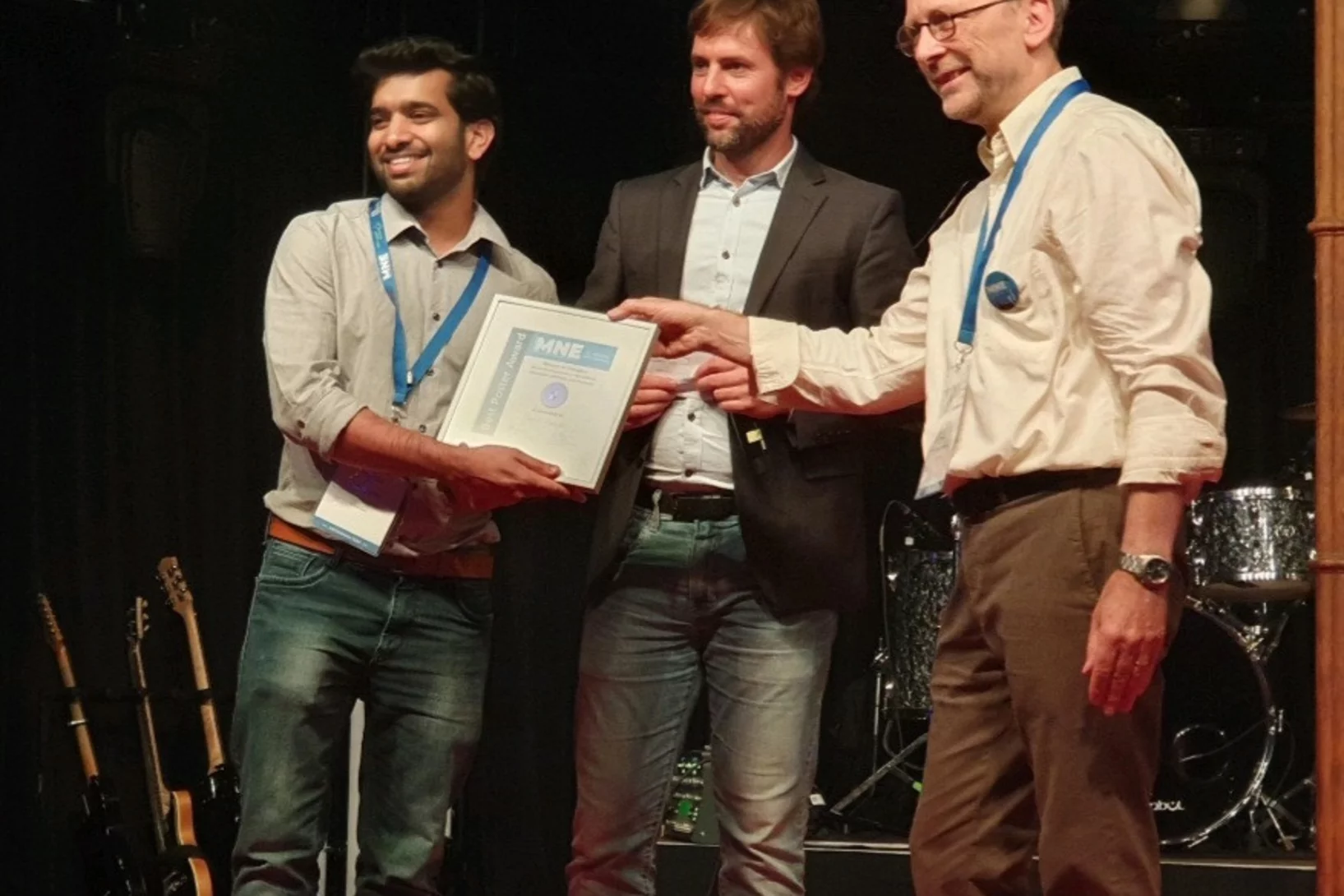New Nat. Rev. Phys. publication: A “gold standard” for computational materials science codes
A large consortium of scientists, coordinated by PSI researchers in the LMS laboratory, led the most comprehensive verification effort so far on computer codes for materials simulations, providing their colleagues with a reference dataset and a set of guidelines for assessing and improving existing and future codes.
A gold standard for computational materials science codes
The most comprehensive verification effort so far on computer codes for materials simulations.
Développement d'un radioligand
Cristina Müller et son équipe cherchent un nouveau moyen de visualiser et d'étudier le récepteur d'entrée du SRAS-CoV-2 au moyen de l'imagerie PET.
Nationaler Zukunftstag 2023
113 Kinder erkunden spannende Berufswelten
Park Innovaare Cleanroom Name is: PICO
We are happy to announce that the new Cleanroom Name in the Park Innovaare will be PICO = Park Innovaare Cleanroom for Optics and innovation.
Next Step – we will work on a Logo (ideas welcome), together with PiA.
The winner of the naming contest: Helmut Schift
Wie künstliche Intelligenz mein Motivationsschreiben verfasst hätte
Wie kann man künstliche Intelligenz im Bewerbungsprozess nutzen? Ich habe es ausprobiert, und künstliche Intelligenz damit beauftragt, aufgrund der Information, dass ich Physikerin und Coach bin, ein Motivationsschreiben für meine aktuelle Position zu verfassen. Hier ist, was dabei herausgekommen ist (interessanterweise sind Inhalt und Struktur unterschiedlich, je nachdem ob ich in Deutsch oder Englisch gefragt habe, also lohnt es sich, beide Übersetzungen zu lesen):
Prendre les maladies à la racine
Les scientifiques du PSI utilisent des méthodes modernes d’imagerie à haute résolution pour réaliser des prises de vues de noyaux cellulaires et identifient ainsi, de manière plus fiable, les anomalies.
SNSF funds new LNS projects on quantum materials for 1.75 million
Scientists working on exotic magnetism at the Laboratory for Neutron Scattering and Imaging (LNS) are to receive two project fundings from the Swiss National Science Foundation (SNSF), amounting to 1.75 million Swiss francs.
A more efficient degrader for proton therapy
At PSI’s Center for Proton Therapy (CPT), protons are used to treat cancerous tumours in a highly targeted way that spares healthy tissue as much as possible. This is the result of the characteristic way in which charged particles interact with matter, so that a beam of protons deposits most of its energy at a certain depth in a material depending on the energy and the composition of the material. The dedicated medical cyclotron COMET accelerates protons to an energy of 250 MeV, which then have to be "slowed down" so that the energy matches the depth of the tumour to be treated.
Berufsbildnerabend 2023
Eine Reise in die Römerzeit
New Study Reveals Surprising Climate Benefits of Agriculture
The big challenges our planet faces—like climate change, food supply, water, and biodiversity—are all interlinked. While agriculture continues to be the primary source of food for human kind, it imposes climate challenges especially through emissions like greenhouse gases and ammonia. To solve this, we need a new approach that reduces the harmful effects of farming on the climate.
Deux projets sont lancés pour relier les qubits à correction d’erreurs
L’agence américaine d’encouragement de la recherche IARPA finance deux projets d’informatique quantique auxquels participent des chercheurs de l’ETH Zurich et du PSI.
We are happy to welcome Jelena
Jelena Petrović is a visiting scientist working on the separation and purification of various radionuclides from irradiated targets and radioactive waste. Additionally, she is exploring the utilization of novel radionuclides for diverse applications, including but not limited to medical applications (44Ti/44Sc), geological studies (32Si), astrophysical investigations (26Al, 180mTa), nuclear waste partitioning (110mAg), and catalytic processes (65Zn).
PANDA bald wieder "einsatzbereit"
Dank dem grossen Einsatz unserer Lernenden, ist die PANDA Anlage schon bald wieder einsatzbereit und liefert Daten.
Cobalt-free layered perovskites RBaCuFeO5+d (R = 4f lanthanide) as electrocatalysts for the oxygen evolution reaction
Co oxides with perovskite-related structure are particularly promising, cost-effective OER catalysts. However, the increasing Co demand by the battery industry is pushing the search for Co-free alternatives. Here we investigate the potential of the Co-free layered perovskite family RBaCuFeO5+δ (R = 4f lanthanide), where we identify the critical structural and electronic variables leading to high OER catalytical performance. The employed methodology, based in the use of advanced neutron and X-ray synchrotron techniques combined with ab initio DFT calculations allowed to reveal LaBaCuFeO5+δ as new, promising Co-free electroctalyst. Moreover, we could show that this material can be industrially produced in nanocrystalline form. We believe that the reported results and methodology may contribute to the implementation of new technologies aimed to generate energy with lower carbon emissions, and can also inspire the scientific community in their search of other Co-free materials with good OER electrocatalytical properties.
Additive manufacturing of alloys with programmable microstructure and properties
Using laser powder bed fusion (LPBF) technology, we devise special processing strategies to ‘program’ the thermal stability of the as-printed alloy, such that it is possible to decide, a priori, how the material’s microstructure will evolve upon heat treatment
Understanding the (de-)lithiation mechanism of nano-sized LiMn2O4 allows achieving long-term cycling stability
We report an in-depth investigation of the local atomic geometry, electronic and crystallographic structure evolution of nano-sized LiMn2O4 using operando XAS and XRD to shed light on (de-)lithiation mechanism when cycled in wide voltage range of 2.0 to 4.3 V vs Li+/Li. Leveraging on these findings, a novel electrochemical cycling protocol, with periodic deep discharge, yields superior electrochemical performance cycled in the range of 3.3 to 4.3 V exhibiting an excellent structure cyclability and an unprecedented increase in the specific capacity upon long cycling.
Améliorer les batteries des voitures électriques
Des scientifiques du PSI utilisent des neutrons pour visualiser les modifications physiques et chimiques qui se produisent dans l’électrolyte des batteries.
TEY-STXM confirms homogeneous doping of nanoparticles for non-fullerene organic solar cells
One of the challenges in modern research on the fabrication of non-fullerene acceptor based organic solar cells is the availability of very efficient hole transport layers (HTLs). A new approach that avoids mutual solubility issues is to deposit the HTL from a suspension of doped organic nanoparticles. Surface-sensitive TEY-STXM measurements at the PolLux beamline characterised the homogeneity of the dopant in the nanoparticles and develop efficient nanoparticle HTL materials for organic solar cells.
Investigations of the irradiation hardening on a ferritic model alloy from spherical nano-indentations
The objective of this project was to determine the contribution from a variety of obstacles to moving dislocations to the nano-indentation stress necessary to initiate plastic flow. The obstacles are characterized by different length scales. Among these characteristic lengths, there are those associated with the material microstructure such as grain size, dislocations density, irradiation-induced defects, and those related to the size of the plastic zone beneath the indenter, or equivalently to the size of the indent. Thus, we can classify the size effects into two categories: structural size effect and indentation size effect (ISE). The underlying idea is to quantify and separate these two effects on the unirradiated material first to be able to properly isolate the contribution of the irradiation defect on the measured hardness from the tests on irradiated materials.
Utiliser dès aujourd’hui des calculateurs quantiques
Les calculateurs quantiques analogiques permettent d’observer des réactions chimiques ultrarapides.
Briefing technologique sur le thème de "Stockage de l'énergie"
Le jeudi 16 novembre 2023, un briefing technologique sur le thème du "Stockage de l'énergie" aura lieu au CSEM à Neuchâtel.
In the search for New Physics at the Intensity Frontier: a first result from the MEG II experiment
In a special seminar at the Paul Scherrer Institut (PSI) in Switzerland, the MEG II collaboration presented on October 20th its first results, based on data collected in 2021. The results are reported on a paper published on arXiv and submitted to the European Journal of Physics C.
Japanese – Swiss BRIDGE Workshop at PSI
BRIDGE stands for Bridging Research Innovations in Diverse muon and neutron science by GEneral collaboration between Japan and Switzerland. After a first remote edition of this new workshop series in 2022, an in-person BRIDGE workshop took place at PSI, October 18-20, 2023.
Bien plus qu’une simple structure de soutien
Chacune des cellules de notre corps abrite un cytosquelette. Contrairement à son nom, ce réseau est bien plus qu’une pure structure de soutien.
Welcome to LXN Henry Bell
Herzlich Willkommen Henry Bell im LXN!
Open Quantum Institute launch
Dr. Cornelius Hempel, head of the Ion Trap Quantum Computation group at LNQ’s ETHZ-PSI Quantum Computing Hub, spoke to SRF to explain how quantum computers work and how future versions of these devices can be used to solve some of the big problems of our time.
Integrative solution structure of PTBP1-IRES complex reveals strong compaction and ordering with residual conformational flexibility
RNA-binding proteins (RBPs) are crucial regulators of gene expression, often composed of defined domains interspersed with flexible, intrinsically disordered regions. Determining the structure of ribonucleoprotein (RNP) complexes involving such RBPs necessitates integrative structural modeling due to their lack of a single stable state. In this study, we integrate magnetic resonance, mass spectrometry, and small-angle scattering data to determine the solution structure of ...
Whitlockite in mammary microcalcifications is not associated with breast cancer
Microcalcifications, small deposits of calcium-containing minerals that form in breast tissue, are often, but not always, a warning sign of breast cancer. The relationship between microcalcifications and cancer has not been fully understood thus far. Researchers discovered now that the relationship between microcalcifications and tumors seems to be linked to the presence of a particular mineral called whitlockite, which is rich in magnesium and is found in microcalcifications only in the absence of tumors.
LXN post-doctoral researcher Dr. Prajith Karadan wins Best Poster Award at MNE conference 2023, Berlin
The MNE (Micro and Nano Engineering) conference is a prestigious annual event that serves as a global platform for experts, researchers, and innovators in the field of micro and nanotechnology. This conference brings together leading minds from academia and industry to share cutting-edge research, exchange ideas, and explore emerging trends and breakthroughs in the world of micro and nanoengineering.

